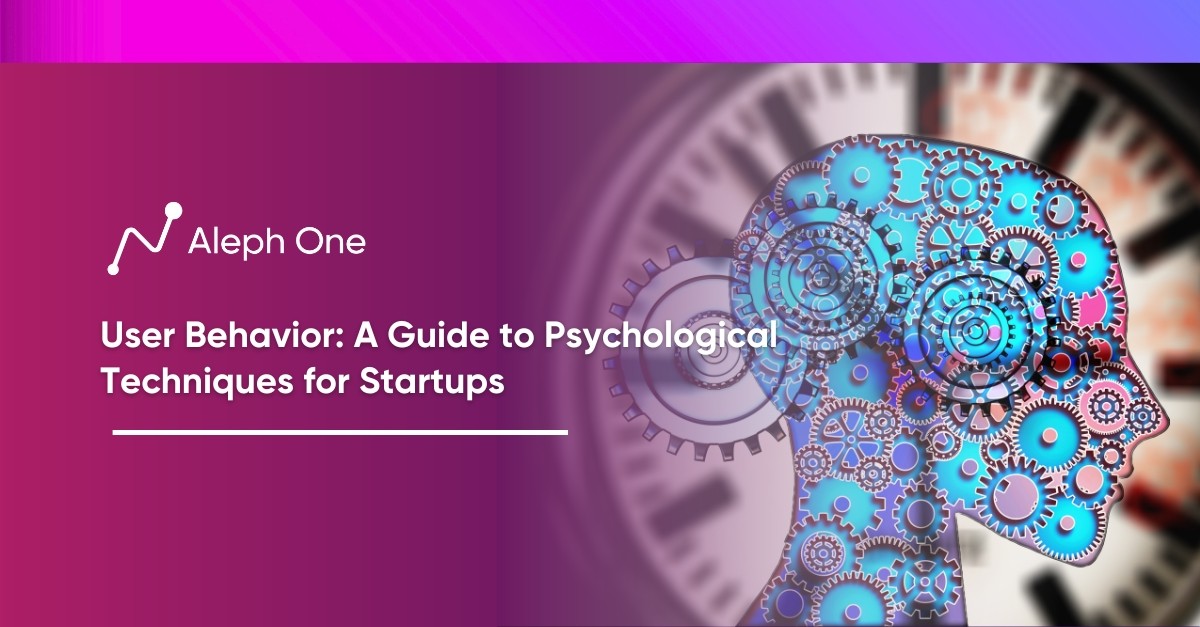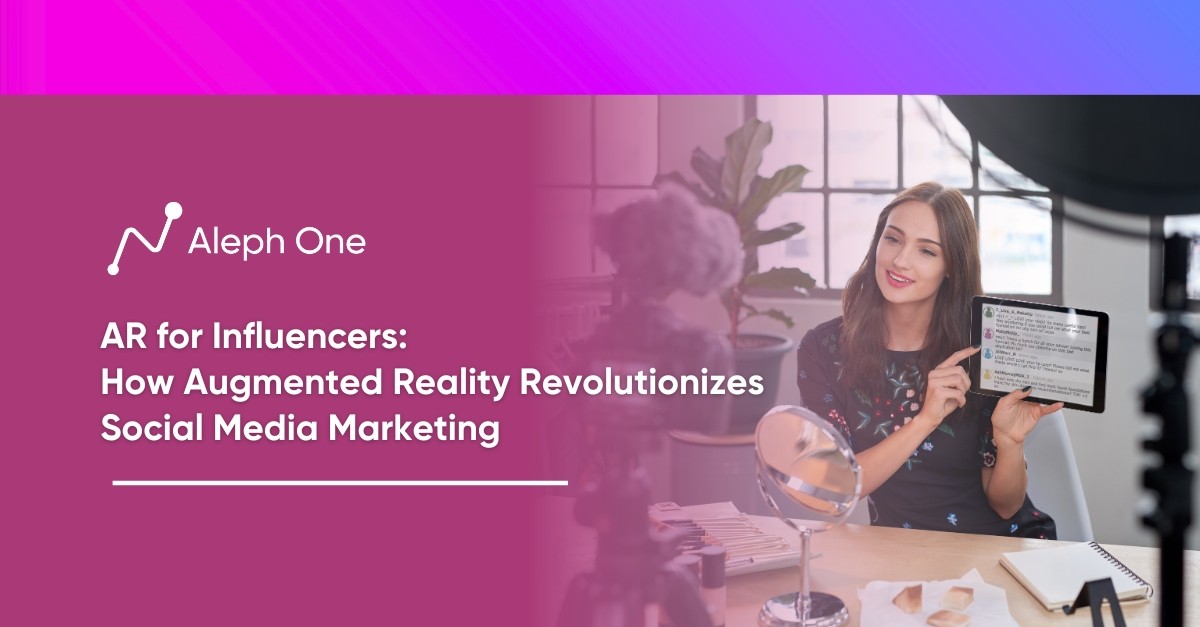Let’s work together to build something amazing. Share your project details and our team will reply to figure out the next steps to your success.

Understanding the intricacies of human behavior is essential for startups looking to gain a competitive edge in the modern business landscape. This comprehensive guide dives into psychological techniques that can influence customer decisions and shape brand loyalty. From the power of reciprocity, where offering freebies triggers a sense of obligation, to the herd mentality that drives individuals to follow the crowd, we explore how these principles can be ethically harnessed to maximize marketing efforts. Furthermore, we investigate the impact of scarcity, likability, authority, and the psychology of choice on consumer behavior, unveiling effective strategies that startups can employ to create demand, foster loyalty, and stand out in a crowded market. Delve into the minds of your customers and learn how to leverage the science of persuasion to propel your startup to success.

The Psychology of Persuasion: How to Influence Customer Decisions
Reciprocity is a powerful persuasion tactic marketers have used for decades. Studies show that people feel obligated to return favors and gifts. In 1974, Coca-Cola sent vouchers to Waco, Texas, which resulted in a 6% increase in sales.
The Power of Reciprocity
According to social scientist Robert Cialdini, reciprocity is one of the six fundamental principles of persuasion. When a brand provides us with a gift or concession, we feel obligated to reciprocate in some way. This is because reciprocity is a deeply ingrained social norm – we learn early that we should return favors and gifts.
Trigger a Sense of Obligation in Customers
Brands leverage the reciprocity principle by offering freebies to trigger a sense of obligation in customers. Even small freebies have been shown to influence people’s buying decisions. Restaurants that offer diners a small free appetizer or drink often see an increase in tips and repeat customers. The reciprocity effect makes people feel they should return the favor, like being generous.
Coca-Cola Free Coke Voucher – Case Study
A famous example of reciprocity is Coca-Cola’s free Coke voucher campaign in Waco, Texas, 1974. Coca-Cola mailed vouchers for a free 6-pack of Coke. This small freebie impacted Coke’s market share by 6% in three months. The free Coke triggered reciprocity, causing people to buy more Coke.
In today’s digital world, reciprocity is still powerful for brands. Free email newsletters, online samples, trial periods, and other digital freebies can trigger the reciprocity effect in customers. The key is to provide real value with your free offers to make people feel they owe you something in return. When leveraged ethically, reciprocity is one of the most effective tools for influencing customer behavior and building brand loyalty.
The Herd Mentality: Why People Follow the Crowd
Humans have a strong tendency to follow the crowd. We look to others to help determine appropriate behavior and make decisions, especially in uncertain situations. This is known as the herd mentality or bandwagon effect.
Highlight How Many Customers Buy or Use Your Brand
Marketers frequently leverage the herd mentality by highlighting how many others buy or use their product. For example, they may display reviews, testimonials, and the number of subscribers or followers to tap into customers’ urge to follow the crowd.
Change in Messaging Can Bring Substantial Change
A famous social psychologist, Robert Cialdini’s study demonstrated how hotels could increase their bookings by simply informing potential guests that the hotel was very popular. People assumed it would be desirable if others were staying there. This small change in messaging resulted in a substantial increase in reservations.
Fear of Missing Out (FOMO)
The herd mentality often leads to “fear of missing out” (FOMO) which causes people to buy products or experiences primarily because others are buying or engaging with them. People worry that by not purchasing or participating, they will miss out on something rewarding or essential. Marketers activate FOMO through messaging like “limited time only!” or “only two left in stock!”. Making a product seem scarce or in high demand triggers people’s social anxiety about being left out.
Herd Mentality on Social Media
Digital marketers frequently leverage the herd mentality on social media. When a brand’s social following and engagement numbers are prominently displayed, it taps into people’s tendency to follow the crowd. The more likes, shares, and followers a company has, the more popular and credible they appear. People assume that if others trust and engage with the brand, it must be reputable.
The herd mentality is a powerful persuasion tactic for startups and brands. When leveraged ethically and responsibly, it can gain new customers and build trust in your product or service. However, it needs to be balanced with messaging that also encourages rational, critical thinking about the benefits and value you provide. The herd mentality should supplement rather than replace a robust, evidence-based marketing strategy.
Scarcity: Why People Want What They Can’t Have
The scarcity principle refers to people perceiving limited or scarce resources as more valuable. Demand and desire increase when something is rare or availability is little. Marketers frequently leverage this psychological tendency by emphasizing how low or limited their product is to trigger customers’ fear of missing out and drive sales.
Scarcity Messaging Can Increase Conversion Rates
For example, e-commerce stores often use scarcity messaging like “only two left in stock!” or “sale ending soon!” to encourage people to buy quickly before the opportunity is gone. Research shows that these scarcity tactics can increase conversion rates by up to 332% due to the psychological motivation to obtain scarce resources. The fear of missing out on a limited opportunity creates a sense of urgency that propels people into action.
Cabbage Patch Kids – Case Study
Some of the most dramatic examples of the scarcity principle in action involve scarce or coveted products that sell out almost instantly and gain popularity. For instance, in the 1970s, Cabbage Patch Kids dolls were low after selling out quickly, making them a coveted holiday item. The scarcity made them appear more valuable and desirable, creating a frenzy of demand.
Limited Quantities Drive Demand
Similarly, limited edition sneakers, handbags, and other brands like Nike and Louis Vuitton frequently sell out within minutes of launching due to scarcity-driven demand. When quantities are limited, people perceive the item as rare and unique, and they worry that if they don’t act quickly, they will miss their chance to obtain it.
For startups and new brands, scarcity is helpful to drive interest and sales, especially when first launching. By limiting the availability of a new product, at least initially, companies can leverage people’s tendency to want what they can’t have in full force. Over time, as the product becomes more established, scarcity tactics should be used more selectively to avoid frustrating customers. But when used appropriately, the scarcity principle is a powerful way to motivate people into action and give your brand the perception of being highly coveted. Ultimately, we all want what we can’t have, at least to some degree.
Liking: Why People Buy from People They Like
People naturally tend to like those who are similar, familiar, and physically attractive to them. This is known as the “liking principle” in persuasion. Marketers leverage this psychological tendency by making their brand, product, and company as likable as possible to customers.
Mascots and Characters
One of the most effective ways to build likability is by using mascots and characters. For example, Ronald McDonald has been the mascot of McDonald’s for over 50 years, helping to make the brand friendly and familiar, especially to children. This strategy taps into people’s tendency to like those expected of them.
Celebrity Endorsements
Celebrity endorsements are another popular way for brands to tap into the liking principle. When a customer sees a celebrity they like endorsing a product, it makes them more inclined to view the brand favorably. Nike is a master of this technique, frequently featuring star athletes in their marketing to make the brand aspirational to customers.
Social Media
Social media has provided new opportunities for brands to build likability. Customers engaging with brands on social media increases familiarity and fosters psychological liking over time. Regular social media users like and continue to follow the brands they engage with the most. Posting behind-the-scenes content, amusing videos, and images and authentically engaging with followers helps humanize the brand and make it likable.
Models for Your Brand
The physical attractiveness of a brand’s representatives and assets also play into the liking principle. Attractive models, aesthetically pleasing product designs, and visually stunning marketing materials draw people in and make them feel good about the brand. While surface-level, “pretty” marketing needs to be balanced with substance, an attractive style can contribute to likability and make a brand stand out.
The liking principle demonstrates how people tend to buy from and feel positively towards brands and companies that they find familiar, attractive, and similar to themselves in some way. By cultivating likability through characters, celebrity endorsements, social media engagement, and attractive design, brands can leverage this psychological tendency to build customer affinity and loyalty.
Authority: Why People Follow the Experts
People tend to follow and believe those who appear authoritative and expert. This is known as the authority principle. When a figure is portrayed as knowledgeable or experienced, we see them as a credible source of information and are more easily persuaded by them.
Establish Authority Through Certifications, Endorsements, Media Coverage, and Expertise
Brands often establish authority through official certifications, endorsements, media coverage, and promoting the expertise of their founders and executives. For example, Dr. Robert C. Atkins was a cardiologist who published a popular diet book in the 1970s based on his medical expertise. Although other experts criticized the Atkins Diet at the time, Dr. Atkins’ authority as a physician helped popularize the diet and turned it into a thriving commercial brand.
Highlight Founder’s Expertise
Technology brands frequently highlight the expertise and experience of their founders to build credibility. For example, Dell emphasizes that Michael Dell founded the company as a student at 19 to portray him as a tech prodigy. Meanwhile, Steve Jobs is described as a visionary innovator who established Apple’s authority. When these founders were CEOs, their authority and “vision” were critical to the brand’s marketing.
Media Coverage
Media coverage also plays a role in establishing authority. Being featured in reputable publications, TV shows, and news outlets positions a company as an expert source. For example, when a startup founder is interviewed on CNN or in Forbes, it boosts their authority and credibility. Some brands also get “certified” or win awards from independent organizations to support their claims of expertise. For example, a cosmetics brand may get certified as “dermatologist-tested” or “clinically proven.”
Authority is a powerful persuasion tactic that portrays a brand, product, or person as a credible expert. When used ethically, it can be an effective way for startups to gain trust and influence customer decisions. However, it needs to be backed by real expertise and experience. Fake or unearned authority will not stand up to public scrutiny in the long run. The most successful brands establish authority through founder expertise, third-party endorsements, media coverage, and a track record of providing real value to customers.
The Psychology of Choice: Why Too Many Options Paralyze People
While some choices are good, too many options can overwhelm people and prevent them from selecting. This phenomenon is known as “choice paralysis,” it is a real issue for both consumers and marketers.
Making the Optimal Choice
Research shows that when faced with many options, people have difficulty choosing because they want to make the optimal choice. But evaluating many options requires much cognitive effort and can lead to anxiety about missing out on a better alternative. This often results in people avoiding making a choice altogether or defaulting to a “safe” option rather than the option they want.
Too Many Choices Can Reduce Conversion Rates
For marketers, too many choices in a product line or on a website can confuse customers and reduce conversion rates. It requires more work for customers to determine which product or option is right for them. They may need more clarification about their selection and more satisfied with their final choice.
Curate Options With Choice Architecture
Curating options and using choice architecture to guide people to the best solutions leads to higher customer satisfaction and conversion rates. For example, in 2000, Procter & Gamble reduced Head & Shoulders shampoo variants from 26 to 15, which resulted in a 10% increase in sales. They made the product selection process more accessible by eliminating redundant or poor-selling options.
Less Choices Tend to Make People Happier and Less Stressed
Another example is The Paradox of Choice by Barry Schwartz. In his book, Schwartz argues that reducing options and choices tends to make people happier and less stressed. When companies streamline their product lines, they simplify the choice process for customers. This can build goodwill and turn choice paralysis into an opportunity to provide helpful curation.
Well-curated Options Helps Customers Feel More Confident in Their Purchases
Too many choices can be demotivating and reduce sales. But limited, well-curated option helps people feel more confident in their selections. Brands should focus on understanding their customer’s needs and preferences to determine how much choice is “just right.” By guiding people to the optimal choice, companies can turn the psychology of choice into a persuasive marketing technique.
FAQ
How can brands strike the balance between offering enough options to cater to different customer needs and avoiding overwhelming customers with too much choice?
Brands can balance offering enough options and avoiding overwhelming customers by thoughtfully curating their offerings. Understanding their audience’s needs and preferences is key to determining the optimum level of choice. Brands can continuously assess the performance of their product lines and trim down where necessary. Offering personalized recommendations based on customer data and feedback can provide a guided selection process and prevent choice overload.
In leveraging the scarcity principle, how can brands avoid creating frustration in customers who may feel rushed or pressured into the buying process?
For the scarcity principle to be effectively used without frustrating customers, it is important to apply it wisely and sparingly. Brands should maintain transparency and ethicality in their marketing and sales tactics and avoid creating a false sense of urgency. Customers appreciate honesty and tend to trust straightforward companies about product availability and pricing. Customer experience should be prioritized over short-term sales spikes, building long-term customer loyalty is essential to a brand’s success.
Since liking is a powerful factor in persuasion, how can brands maintain a likable image while dealing with any potential backlash or negative publicity?
To maintain a likable image while dealing with potential negative backlash, brands should prioritize transparency and humility. If a mistake is made, acknowledging the error and implementing necessary changes shows authenticity and responsiveness. In the case of negative publicity, an authentic apology and concrete steps to make things right can go a long way in repairing the image. Engaging proactively with their audience, accepting feedback, and continuously improving can help brands maintain a good reputation despite setbacks.
Get the latest news and updates from Aleph One in your inbox.



